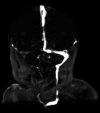The Effect of Prolonged Antenatal Intravenous Immunoglobulin Treatment in Preventing Gestational Alloimmune Liver Disease-A Case Series with Literature Review
- PMID: 39780941
- PMCID: PMC11706633
- DOI: 10.1055/a-2496-8690
The Effect of Prolonged Antenatal Intravenous Immunoglobulin Treatment in Preventing Gestational Alloimmune Liver Disease-A Case Series with Literature Review
Abstract
Background Gestational alloimmune liver disease (GALD) is characterized by maternal IgG-directed fetal hepatocyte damage and can lead to severe liver failure and fetal or infant death. Moreover, GALD is associated with a near 90% risk of recurrence in subsequent pregnancies. Case We present a case of a newborn patient delivered to a 32-year-old G2P1000 mother who received prolonged antenatal intravenous immunoglobulin (IVIG) treatment during the current pregnancy due to the neonatal death of the first child from GALD-related liver failure. Postnatal testing, including a liver magnetic resonance imaging (MRI) and buccal biopsy of this newborn, showed normal morphology of the liver without any abnormal iron deposition. Additional laboratory testing showed a lack of any liver injury. Conclusion This case supports the use of antenatal IVIG immunotherapy to prevent the recurrence of GALD in subsequent pregnancies. Key Points GALD can lead to severe fetal liver injury.GALD is highly recurrent in subsequent pregnancies.Prophylactic IVIG may prevent GALD recurrence.
Keywords: antenatal IVIG; fetal liver injury; gestational alloimmune liver disease; neonatal hemochromatosis; recurrence.
The Author(s). This is an open access article published by Thieme under the terms of the Creative Commons Attribution-NonDerivative-NonCommercial License, permitting copying and reproduction so long as the original work is given appropriate credit. Contents may not be used for commercial purposes, or adapted, remixed, transformed or built upon. ( https://creativecommons.org/licenses/by-nc-nd/4.0/ ).
Conflict of interest statement
Conflict of Interest None declared.
Figures



Similar articles
-
Drug-induced Liver Injury from Intravenous Immunoglobulin for Prevention of Recurrent Gestational Alloimmune Liver Disease: A Clinical Catch-22.AJP Rep. 2024 Nov 13;14(4):e254-e258. doi: 10.1055/a-2444-7155. eCollection 2024 Jul. AJP Rep. 2024. PMID: 40026653 Free PMC article.
-
Neonatal hemochromatosis.J Clin Exp Hepatol. 2013 Dec;3(4):313-20. doi: 10.1016/j.jceh.2013.10.004. Epub 2013 Nov 27. J Clin Exp Hepatol. 2013. PMID: 25755519 Free PMC article. Review.
-
Gestational alloimmune liver disease treated with exchange transfusion and intravenous immunoglobulin: A case study.Transfus Apher Sci. 2022 Jun;61(3):103347. doi: 10.1016/j.transci.2021.103347. Epub 2021 Dec 22. Transfus Apher Sci. 2022. PMID: 35034842
-
Hunting for the elusive target antigen in gestational alloimmune liver disease (GALD).PLoS One. 2023 Oct 20;18(10):e0286432. doi: 10.1371/journal.pone.0286432. eCollection 2023. PLoS One. 2023. PMID: 37862305 Free PMC article.
-
Gestational alloimmune liver disease and neonatal hemochromatosis.Semin Liver Dis. 2012 Nov;32(4):325-32. doi: 10.1055/s-0032-1329901. Epub 2013 Feb 8. Semin Liver Dis. 2012. PMID: 23397533 Review.
References
-
- Whitington P F. Gestational alloimmune liver disease and neonatal hemochromatosis. Semin Liver Dis. 2012;32(04):325–332. - PubMed
-
- Whitington P F, Kelly S. Outcome of pregnancies at risk for neonatal hemochromatosis is improved by treatment with high-dose intravenous immunoglobulin. Pediatrics. 2008;121(06):e1615–e1621. - PubMed
-
- Whitington P F, Kelly S, Taylor S A et al.Antenatal treatment with intravenous immunoglobulin to prevent gestational alloimmune liver disease: comparative effectiveness of 14-week versus 18-week initiation. Fetal Diagn Ther. 2018;43(03):218–225. - PubMed
-
- Rand E B, Karpen S J, Kelly S et al.Treatment of neonatal hemochromatosis with exchange transfusion and intravenous immunoglobulin. J Pediatr. 2009;155(04):566–571. - PubMed
Publication types
LinkOut - more resources
Full Text Sources

